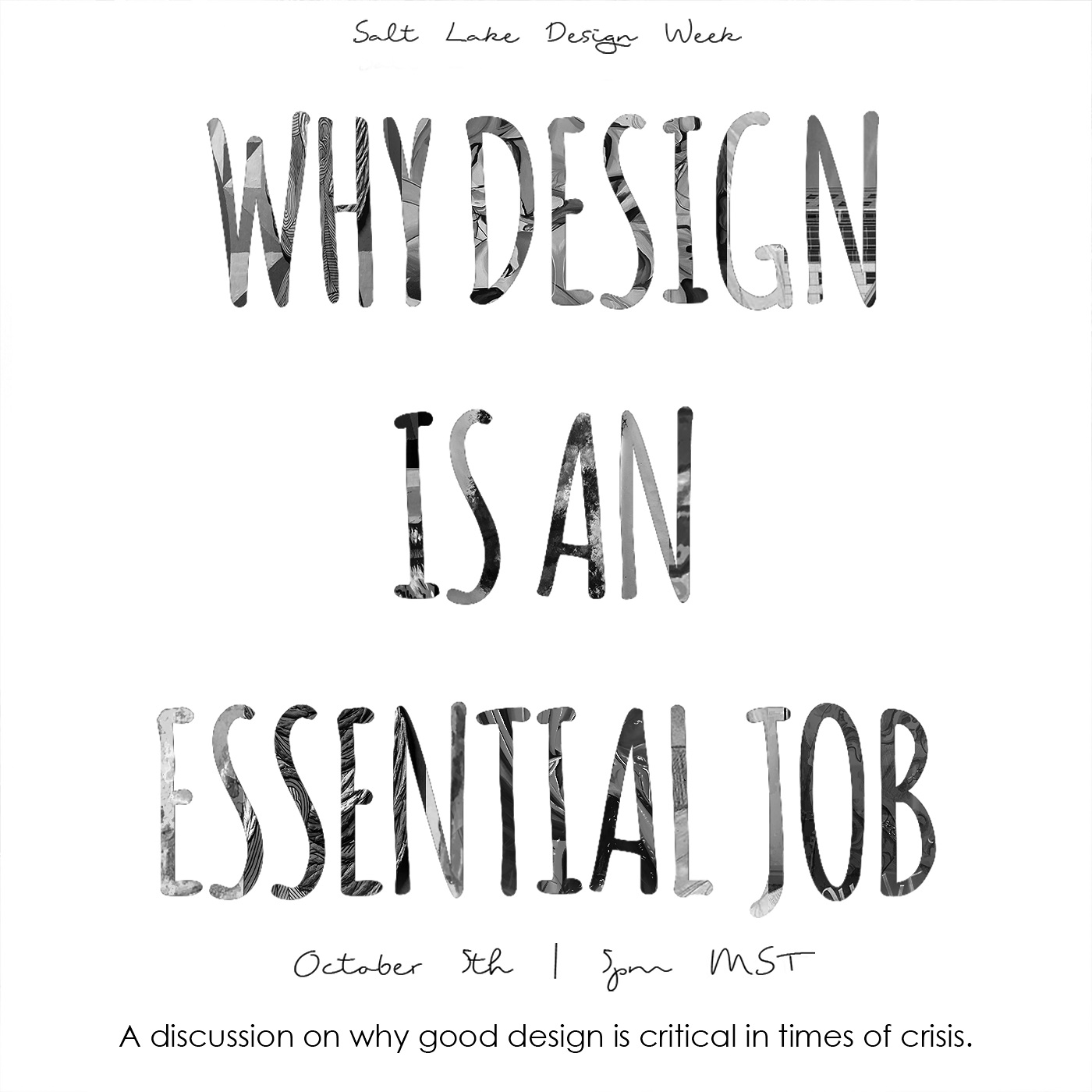
SLDW 2020: Why Design is an Essential Job
Events
Urban Ecology master’s student Taylor Maguire led Oct. 5’s timely “Why Design is an Essential Job” discussion for Salt Lake Design Week 2020. An intimate group of mostly design students and professionals gathered in the Zoom call to share their thoughts about design’s role in society during a pandemic. During the brisk open forum, a clear picture came into view—design is ubiquitous, and even during a once-in-a-century crisis, it remains essential.
To spark discussion, Maguire displayed the results of a poll published by The Sunday Times during the pandemic that asked responders what they considered were the least and most essential jobs. When a crisis hits, people who answered the poll considered medical workers, delivery people and waste disposal workers to be among the most essential. Artists were named the least essential.
The poll reminded one person of Maslow’s Hierarchy of Needs. Human beings demand physiological needs be met first, including food, water, sanitation, shelter and clothing. Paintings or music might not fall in that category for most people. In reality, just about anything constructed by human hands in the modern world was imagined by designers of all kinds, from architects to web designers. It’s hard to picture a world without their input.
“Design is art that people use.”
One participant offered a quote to describe design’s role in life: “Design is art that people use.” The pandemic brought this axiom into focus, and a good portion of the discussion explored how design factors into life in 2020. Everything is visual, and there was an impressive need for design since the beginning of the pandemic to help spread vital information. Designers crafted infographics to show the public how COVID spreads and how to prevent it. Every poster detailing the steps for proper handwashing technique was designed by someone over the course of the pandemic.
Design’s impact goes deeper than that, though. People are spending more time scrolling their social media feeds, browsing online storefronts and using virtual platforms to connect with friends, family and coworkers. All this screen time requires designers. Well-produced ads are crucial since consumers are spending less and vendors in a crowded market must be able to make a good impression online. Brands and businesses that used to rely on in-person sales in a storefront now need advertisement to reassure uncertain customers.
At the same time, plenty of students are taking classes online, and many professionals are also working remotely. The user interfaces they interact with need to be intuitive. Interior design becomes more important to people with some disposable cash when they grow dissatisfied with how the homes they’re trapped inside look.
“Even if the public at large may keep ranking design at the bottom of their list of priorities, design remains essential in many ways.”
As for the arts more generally, people have immersed themselves in books, tv shows and other media to entertain themselves since the peak of lockdown earlier this year. “For me, everything I’ve been enjoying this year was made possible by artists of some sort, especially as everything moved online,” said another person in the chat. While artists and designers may not have the same prestige or recognition as doctors, nurses or other frontline workers, their contributions made a huge impact in people’s everyday lives during the pandemic.
Unfortunately, COVID-19 negatively affected designers in spite of the public need for their work. One example is a participant’s experience working at a print shop, who said that the pandemic hurt business. At first, a big spike came as some people needed signs printed to inform people about COVID-19 and its impacts. After that, people still ordered shirts or signs, but in a much smaller number than last year. Many people are struggling to meet their basic needs due to the economic recession that came in COVID-19’s wake. Even if the public at large may keep ranking design at the bottom of their list of priorities in the midst of the pandemic and all its hardship, design remains essential in many ways.
“Urge people to recognize the water they swim in and see the work of designers and artists that might go unnoticed.”
In the face of the current situation, Maguire’s forum reinforced to design students and professionals that their work is valuable. For non-designers, the discussion brought out a deeper perspective on the role that design plays in daily life. As the late David Foster Wallace once said, “There are these two fish swimming along and they happen to meet an older fish swimming the other way, who nods at them and says ‘Morning, boys. How’s the water?’ And the two young fish swim for a bit, and then one of them eventually looks over at the other and goes, ‘What the hell is water?’”
When Wallace laid out this classic parable, he was urging a graduating class to be aware of what is essential around them, and that quote is applicable here as well. Design is present in almost everything in a built environment—in the streets, in homes and online. As the COVID-19 pandemic continues, discussions such as this one urge people to recognize the water they swim in and see the work of designers and artists that might go unnoticed.